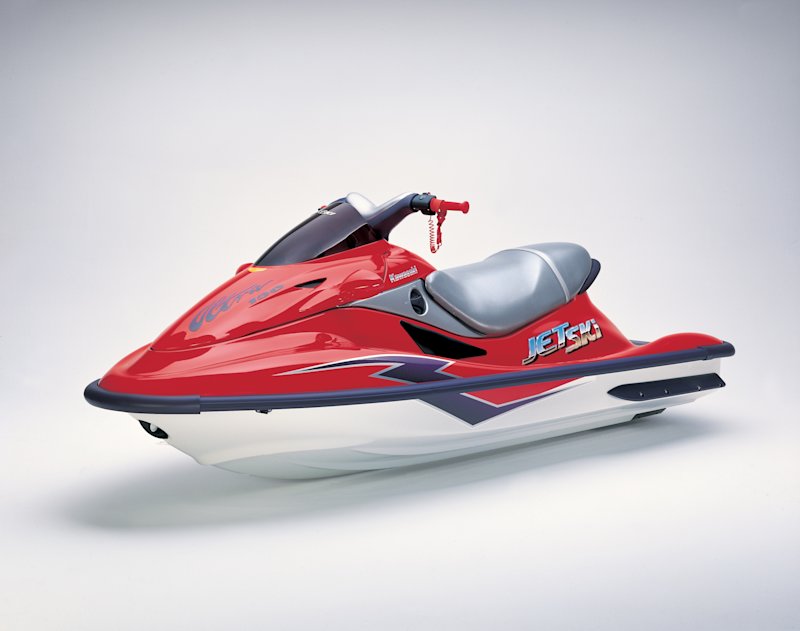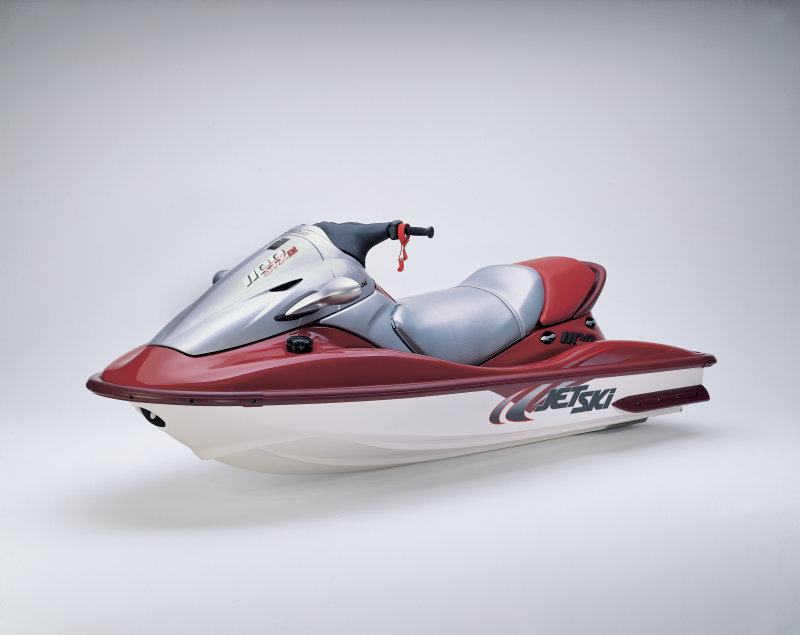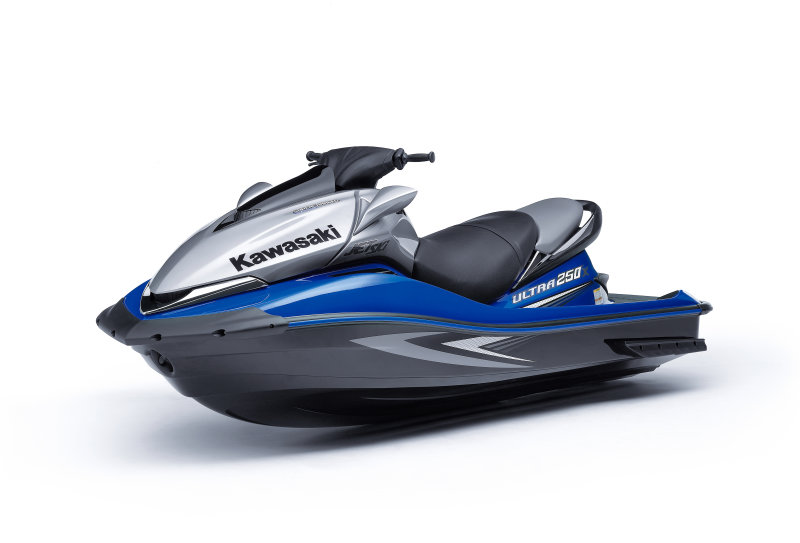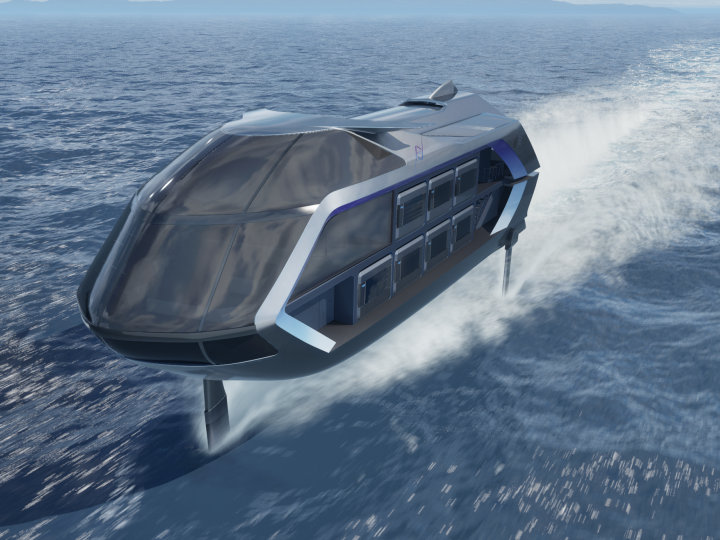Kawasaki introduced the world to a whole new style of recreation—and even created a new lifestyle—with its Jet Ski watercraft.
JS550

This model made the Jet Ski popular around the world with its outstanding performance.
A stand-up type designed to hold a single rider, it became an enduring bestseller that sold more than 200,000 units across the globe.
900ZXi

The first Jet Ski model to feature a three-cylinder engine, which boasted a maximum power output of 100PS. This luxury model came with a fully-colored body including the bottom and a choice of two colors: red or lime green.
Ultra150

A two-seater sport model fitted with the most powerful two-stroke engine in Jet Ski’s history. With a horsepower of 145PS, it offered unprecedented acceleration and sharp turning performance.
JET SKI 1100 STX D.I.

This model featured a two-stroke, direct injection engine developed to address U.S. environmental regulations adopted since the 1998 models.
The new engine achieved emission levels that were far below regulation values and contributed to the continued sales of existing models.
JET SKI ULTRA 250X

This three-seater ultra sport model was equipped with a 1,498cc liquid-cooled, four-stroke, four-cylinder engine combined with a Roots-type supercharger that provided high boost pressure even at low rpm. The engine boasted a maximum power output of 245PS.
In October 1972, a newspaper article in The San Diego Union described a “small watercraft featuring motorcycle-like handlebars, behind which you stand and steer the vehicle across the water surface, much like a new type of water scooter.” This watercraft was the prototype of the Jet Ski that Kawasaki developed based on an idea put forward by American inventor Clayton Jacobson II.
In 1973, Kawasaki released the world’s first mass-production Jet Ski watercraft, the JS400, which created a new market for personal watercraft (PWC), mainly in the United States. PWCs quickly caught on as a recreational vehicle thanks to their outstanding maneuverability on the water.Jet skiing became a popular sport and was soon institutionalized with the establishment of a sport association in 1978.
The first model was powered by a modified version of a snowmobile two-stroke engine and had a displacement of 398cc and a horsepower of 26PS. It was also a stand-up type, as were all other models in the Jet Ski’s early history. Kawasaki expanded its model lineup only with this type until the late 1980s. But when competitors appeared in the market with sit-down types (called “runabout”), competition forced Kawasaki to add sit-down types onto its lineup as well. In addition,the introduction of strict environmental regulations in the 1990s gave engineers more technological hurdles to clear. To bring the Jet Ski into compliance, Kawasaki introduced a direct injection engine in 2000 and also a four-stroke engine in 2003. Today’s flagship models feature a 1,498cc four-stroke engine with a horsepower of 310PS.
There is a book that describes the history of the Jet Ski and analyzes its impact on people’s lives. As the title of the book——Life, Liberty, and the Small-Bore Engine——illustrates, Kawasaki’s Jet Ski created a new lifestyle.







